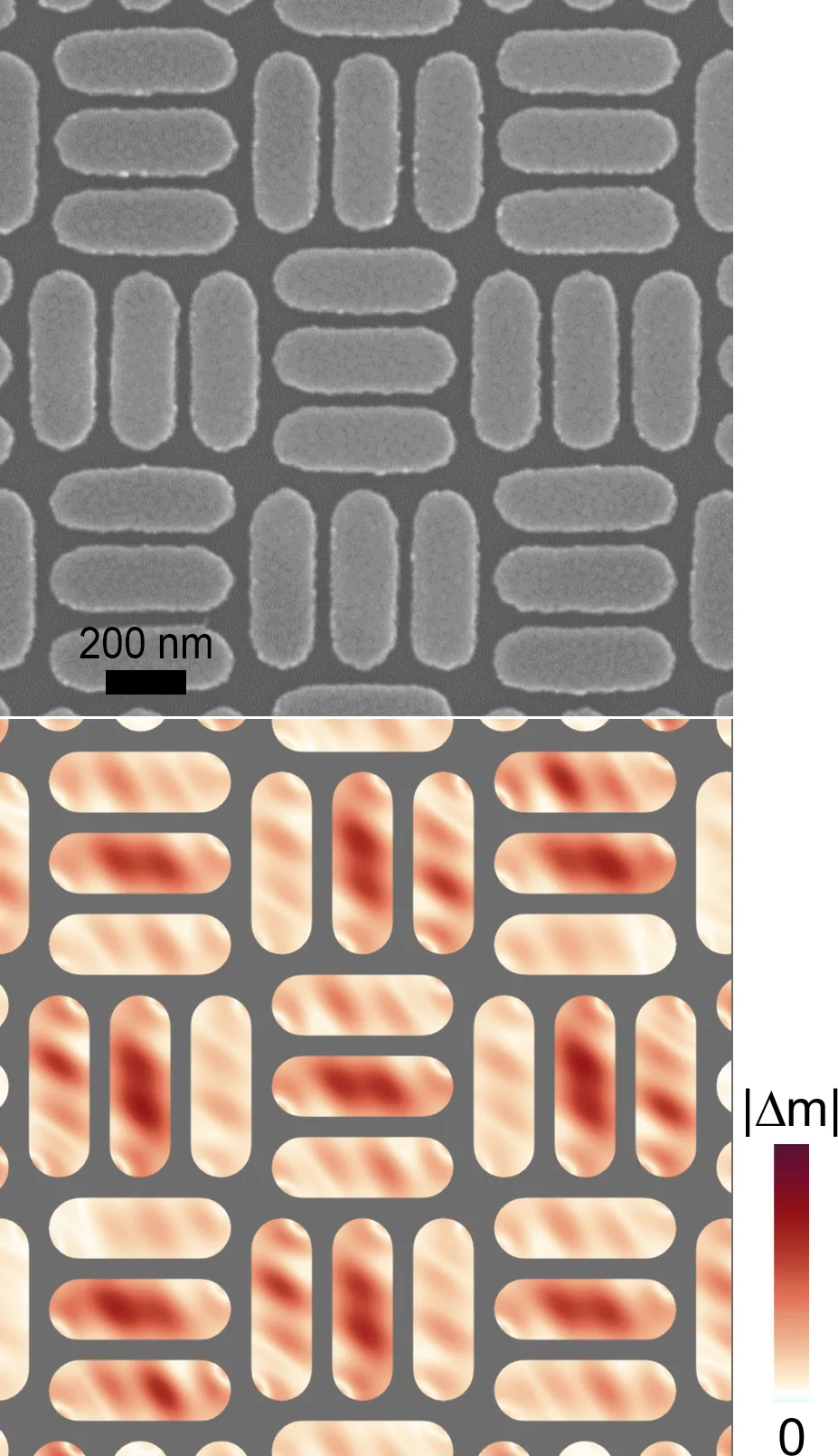Well-studied metamaterials, such as photonic and phononic crystals, provide a means to tailor the flow of electromagnetic and elastic waves. In comparison, magnonic crystals, which are composed of ensembles of periodically patterned nanomagnets coupled by stray fields, are more recent systems enabling the propagation of spin excitations, or spin waves. They offer a way to define magnonic density of states characterized by frequency ranges where spin wave propagation is allowed.
Because the frequencies of spin waves are in the GHz range, magnonic crystals offer promising prospects for the miniaturization of devices with microwave frequencies. The frequencies and the band gap can be tailored based on the geometry of the nanomagnet arrays as well as on their magnetic state. While this provides, in principle, unique opportunities to design spin logic devices, first the influence of the array geometry and of the non-volatile magnetic states on the spin wave modes needs to be investigated and understood.
In a paper published in Nano Letters, a team of researchers from the Paul Scherrer Institute, the ETH Zürich, the Helmholtz-Zentrum Dresden-Rossendorf in Germany and Uppsala University in Sweden, have investigated spin wave modes in a particular class of magnetically frustrated systems, called artificial spin ices. The study was based on experiments using time-resolved magneto-optical Kerr effect microscopy and micromagnetic simulations.
The investigated system consisted of geometrically arranged nanomagnets following a chiral pattern. It was previously found that the degree of frustration of the system could be tuned by changing the spacing between nanomagnets. Now, the researchers show that the system possesses a rich mode spectrum, a desirable feature for magnonic crystals. The origin of the modes was traced back to the anisotropy of the magnetostatic interactions, and the mode profile distributions were attributed to the local breaking of inversion symmetry in the system. A surprising finding was the existence of modes whose intensity reflects the long-range nature of the interactions in this magnetostatically coupled system.
With these results, different mechanisms for mode evolution are revealed. These can be used to tailor the response of magnonic crystals, operating with frequencies in the GHz range, thus enabling potential applications for data transport and processing in magnonic-based logic architectures.
Contacts:
Dr. Sebastian Gliga
Swiss Light Source
Paul Scherrer Institut
Telephone: +41 56 310 5481
E-mail: sebastian.gliga@psi.ch
Dr. Susmita Saha
Department of Physics and Astronomy
Uppsala University
SE-75120 Uppsala, Sweden
E-mail: susmita.saha@physics.uu.se
Original Publication:
Spin-Wave Dynamics and Symmetry Breaking in an Artificial Spin Ice
Susmita Saha, Jingyuan Zhou, Kevin Hofhuis, Attila Kakay, Valerio Scagnoli, Laura J. Heyderman, and Sebastian Gliga
Nano Letters 21, 2382--2389 (2020)
DOI: 10.1021/acs.nanolett.0c04294
